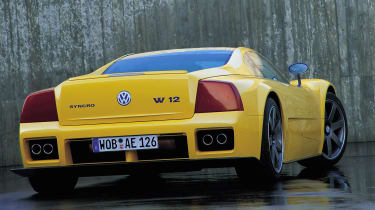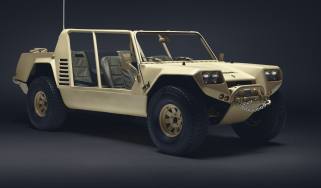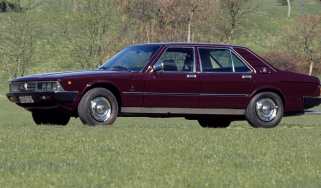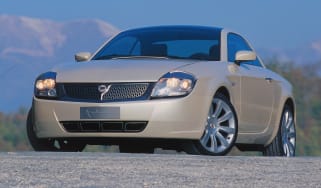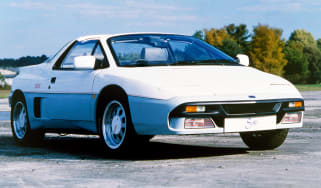Volkswagen W12 Syncro – dead on arrival
A genuine supercar from the maker of people’s cars seemed tantalisingly possible – until logic prevailed
Ferdinand Piëch’s reign at Volkswagen was defined by some incredible engineering showboating, from the expensively bespoke Lupo 3L to the exceedingly strange Passat W8. It was also a time of massive self-confidence in the VW brand that saw the people’s car people stretching beyond Golfs and Polos to sell 50-grand SUVs and S-class rivalling limos created to exacting standards laid down by the gimlet-eyed autocrat in charge. Amidst such hubris, it was inevitable that VW would go for the big one by slapping its badge on a supercar. And here it is.
The W12 Coupé predated the Touareg and the Phaeton and the wacko decision to put a 4-litre engine in a rep car, making its debut at the Tokyo show in 1997. The name gave a clue as to the car’s primary purpose: to showcase VW’s forthcoming flagship engine that spliced together two 2.8-litre VR6s to create a 5.6-litre, 414bhp W12. The car’s designer, Giorgetto Giugiaro, even claimed that he’d started with the engine bay and worked outwards, cementing the idea that this was primarily an attention-grabbing way to crow about a new motor.
> Volkswagen Golf A59 – dead on arrival
There were, however, a couple of things to suggest that the W12 Coupé was more than just motor show eye candy. Firstly, footage of the bright yellow supercar circling VW’s Ehra-Lessien proving ground, signalling that it wasn’t just a static wrapper for the flagship engine. Secondly, an intriguing rumour that VW was going to take it endurance racing. Looking at the W12’s inboard cockpit and long, flat tail, you could certainly imagine it tearing up the Mulsanne Straight at dusk.
Disappointingly, VW’s next move was not to reveal a W12 Coupé covered in decals and 24 hours’ worth of dirt; instead it fetched up at the 1998 Geneva show with a ‘Roadster’ version that dropped the Coupé’s four-wheel-drive system as well as its roof. Soon afterwards the motorsport rumours went away, perhaps because Audi had bagged that job within VW Group, but the W12 concepts refused to disappear.
Four years after its debut, the W12 Coupé was on display again at the Tokyo show, now redesigned with new lights, a reshaped nose and a 6-litre version of that twelve-piston engine making 592bhp. Suddenly VW wasn’t being coy about the car’s showroom prospects and bullishly claimed the project had entered ‘the decisive phase of production development’. The updated car had a new name too, W12 Nardo, in honour of a matt black mule which had been setting endurance records on the eponymous high-speed bowl, notably a staggering run in February 2002 when it covered 4804 miles in 24 hours at a searing average speed of 200.19mph.
Then there was nothing. The W12 engine entered showrooms powering Phaetons, Touaregs, A8s and the Bentley Continental GT, but the supercar that carried its name was nowhere to be seen. The title of this page is short for ‘dead on arrival’ and few cars have fitted that description so well because, truth is, the W12’s fate wasn’t sealed in 2002 but soon after its birth, when Volkswagen bought Lamborghini and Bugatti. The W12 supercar did its job showing off a new engine and proving its endurance abilities, but it was only a matter of time until even Piëch-era VW realised it was stretching itself. A Volkswagen-badged supercar was a bold idea, but not a great use of resources if you have two bone fide supercar makers in the family.
The W12 did enjoy a virtual life, immortalised in various games including the Gran Turismo franchise, but the real-life version was a moment of madness too far, even for the people who brought you the Passat W8.
This story was first featured in evo issue 297.

